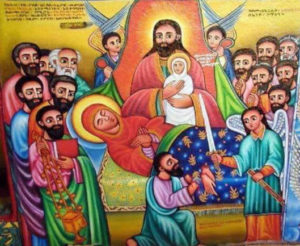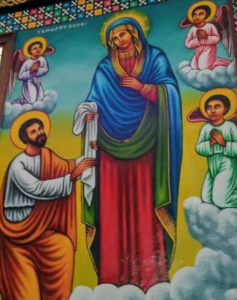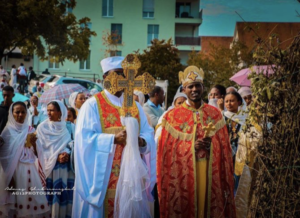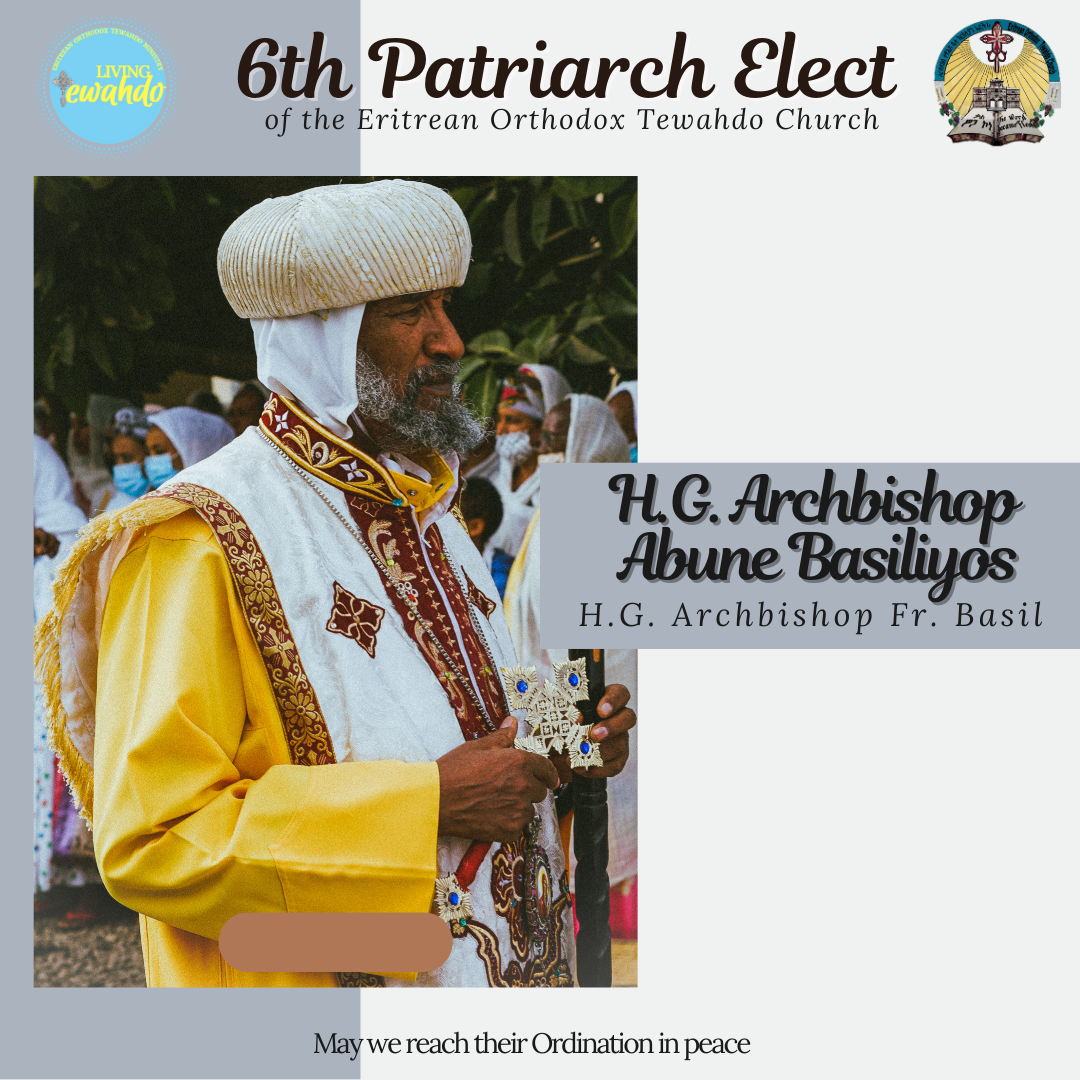Filseta is one of the seven canonized fasts of the Tewahdo church, which is observed as a remembrance of the fast the apostles held in passion of witnessing the falling asleep and assumption of Saint Maryam (Mary). It covers the period from the 1st to the 15th of Nehasie (August 7-22). Filseta literally means movement in the Ge’ez language, and is used to refer to St. Mary’s assumption.
When St. Mary departed from this world, the apostles tended her body and carried it to Gethsemane for burial. Some of the Jews blocked their way to prevent them from burying the body, and decided to snatch and burn it to ashes for fear it may thereafter bring news of another 'resurrection' and 'ascension'.

The soldier's hands being cut off by an angel as he attempted to prevent the burial of our Lady's body. Soon after he pleads the apostles to pray for him, through their prayers he is healed. Our Lord Jesus Christ with thousands of angels, and all the apostles came to her. (With the exception of St. Thomas)
Knowing the evil intent of the Jews, GOD sent HIS angel and took away the body of HIS Mother in glory to the Heaven. The Angels then took the body to Paradise, accompanied by John the Apostle, and laid it under the Tree of Life. When John returned to the other apostles, they asked him where the Virgin Mary was. He told them that her body was placed under the Tree of Life by an Angel. The Apostles then said to each other, "John saw and we did not; let us pray and fast that we can see also."
They fasted and prayed for fifteen days, after which the Angels of GOD brought the body of the Virgin to the Apostles. They buried the body of the Virgin on Sunday. "On Tuesday, three days later, the Virgin Mary rose from the dead, just as CHRIST had resurrected."
St. Thomas the Apostle was not present at the time of St. Mary's departure. He was on duty in his apostolic diocese of India. As he went back to Jerusalem carried on a cloud, he met St. Mary while ascending. Thomas then said to her, "I was not chosen to see your SON's ascension in Glory, nor was I to witness yours. How sinful I am!" But She told him that he was the first to see Her ascending, and gave him the garment (also known as Megnez or Seben in Ge'ez) with which her rested body was covered as a token. That filled him with grace and ecstasy.
When St. Thomas arrived where the disciples were, they told him about St. Mary's departure and he said to them as if he knew nothing, "You know how I conducted myself at the resurrection of the LORD CHRIST, and I will not believe unless I see her body." They went with him to the tomb, and uncovered the place of the body, but they did not find it. Everyone was perplexed and surprised. After confirming her death and seeing the empty tomb, St. Thomas told them how he saw her assumption, and showed them the garment which she gave him as a proof. Priests of the church usually cover their hand-held crosses with a piece of garment to remember the Seben St Thomas received from St Mary.
Despite St Thomas’ account of St Mary’s resurrection, the Apostles were eager to witness it first hand, and so one year later they started fasting and praying starting from August 7. On the 22nd of August (i.e., after 15 days of fasting) St Mary came with her beloved SON, JESUS. On that day, JESUS CHRIST performed the Divine Liturgy designating St Peter as assistant priest and Deacon Stephen (coming from heaven) as an arch deacon, and gave them the Holy Qurban (Communion). After the service, HE ordered the apostles to preach and witness the resurrection and assumption of His Mother throughout the world.
Filseta is the most dutifully observed fast among Tewahdo Christians next to the Great Fast (lent). The faithful including children, who do not actively take part in the other fasts of the church, fast for 15 days joyfully taking Holy Communion. Church Services including the Divine Liturgy are carried out for an uninterrupted 15 days. Churches across the nation are therefore usually filled with the faithful during this period as many of the believers go on a retreat (subae).



